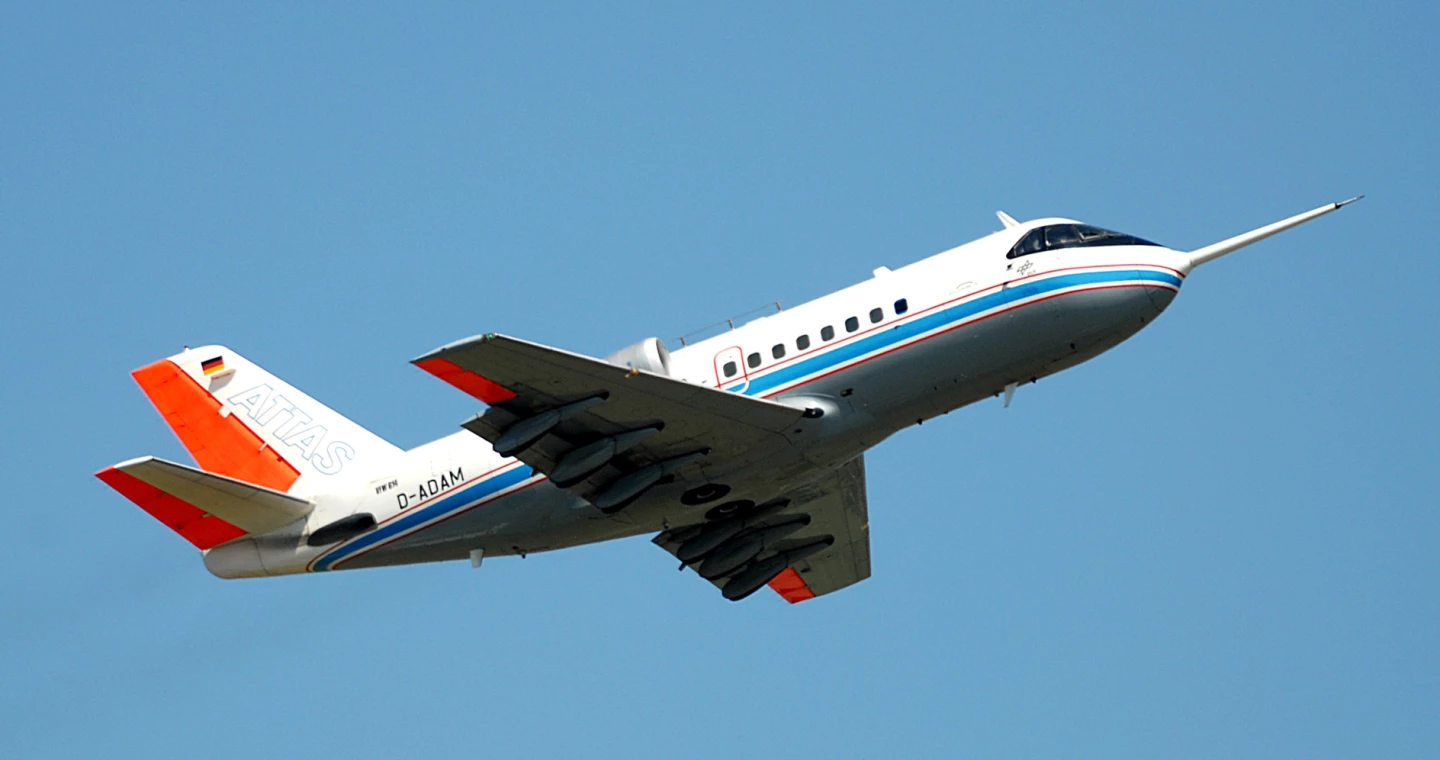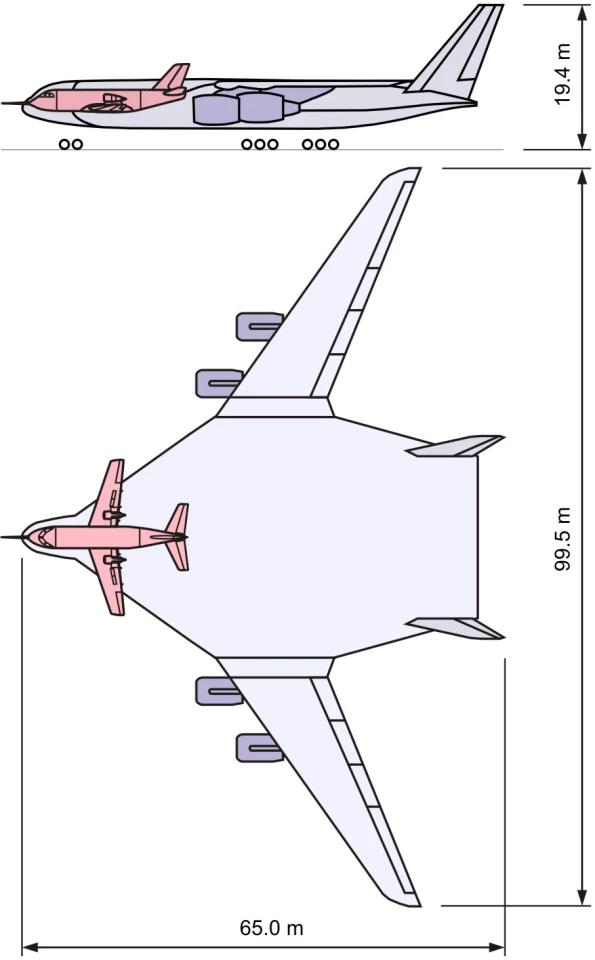"Flying wing" designs that offer reduced weight and drag when compared to traditional "tube with wings and a tail" designs are theoretically the most efficient aircraft configuration. However, true flying wings are inherently unstable and difficult to control. To aid in the design of future aircraft that utilize such a design, researchers at the German Aerospace Center (DLR) have been performing tests to study the flight characteristics of large flying wing configurations using what has been dubbed a flying "chameleon". The DLR's Advanced Technologies Testing Aircraft System (ATTAS) research aircraft resembles a conventional small passenger aircraft, but it has been fitted with special hardware and software to give it the flight characteristics and performance of an entirely different aircraft.
In addition to conventional mechanical flight controls, ATTAS is also equipped with an electrical flight system that allows the researchers to alter the aircraft's flight characteristics. As well as being able to simulate conventional airplanes, ATTAS is also capable of simulating entirely different aircraft designs. Although ATTAS consists of a cylindrical fuselage with wings and a tail unit, the DKR researchers have been using the craft to carry out flight tests that simulate a flying wing model developed as part of the EU project NACRE (New Aircraft Concepts Research).

"With its special control technology, ATTAS can behave like other aircraft while in the air," explains Dirk Leibling, a researcher at the DLR Institute of Flight Systems. "This gives us the opportunity to simulate aircraft that do not even exist yet, and to see where we still need to make improvements."
The simulated aircraft consists of a triangular fuselage with two vertical stabilizers at the tail that are tilted slightly outwards to replace the conventional tail fin/rudder and tailplane/elevator combination. There are also four engines under the additional wing area and a wide body designed to accommodate up to 750 passengers on long-haul flights. The simulated flying wing boasts a wingspan of nearly 100 m (328 ft), length of 65 m (213 ft) and maximum take-off weight of roughly 700 tons. Together, its four engines provide a maximum thrust of 1,425 kilonewtons.

During the flight tests to explore the flight characteristics of the flying wing design the DLR team examined individual maneuvers, such as varying the aircraft's altitude and using a simulated instrument landing system to test approaches on a virtual runway. Evaluations of the flying wing's handling characteristics were carried out after each maneuver, which confirmed that the flying wing aircraft is difficult to control due to its unusual shape. However, DLR says that the introduction of an additional DLR-developed control system that initiated appropriate counter-measures was able to prevent the aircraft from responding adversely to pilot inputs.
"The flight test confirmed our assumptions," said Leibling about the results. "There is a limit to handling a modern, completely uniquely-shaped aircraft without coordinated flight control laws. We can only achieve the flight characteristics we want by using appropriate computer and control technology."
ATTAS has been in service for 25 years and by working its simulated, shape-shifting magic during a real test flight, the DLR team says the aircraft has allowed it to confirm in a 'tangible' way the preliminary results of theoretical investigations. So, with its special capabilities, the 25 year-old ATTAS could be paving the way for the passenger aircraft of tomorrow.






